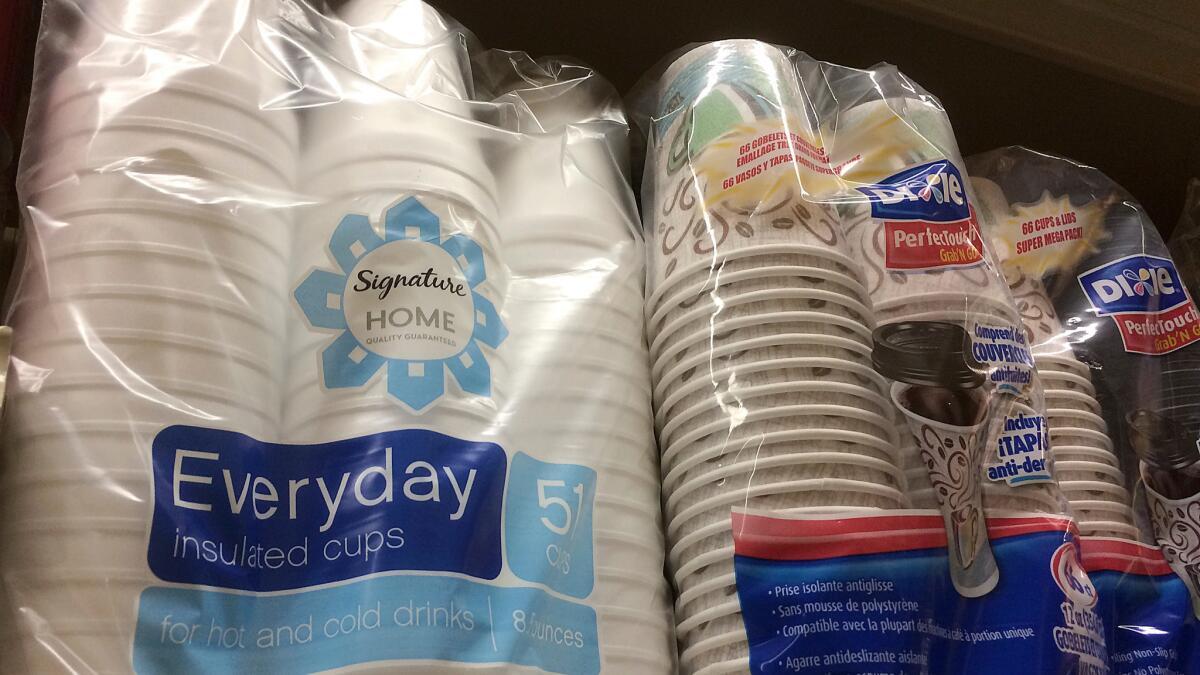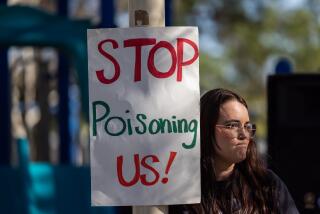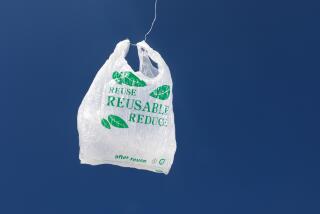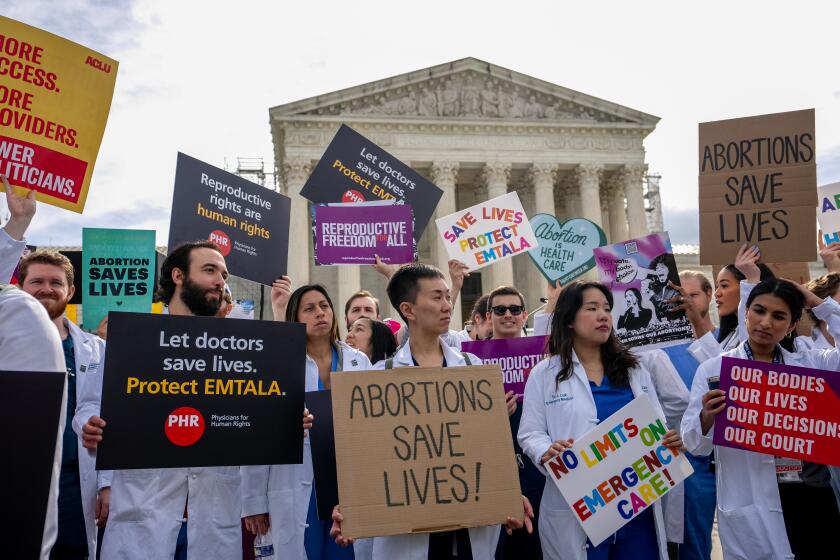Opinion: Take it from a trash researcher: Banning polystyrene food containers won’t do any good

The Times’ June 6 editorial, “California’s failure to ban polystyrene means cities like Los Angeles need to step up,” encourages city governments to pursue a misguided ban on one type of food-service container that already failed in the state Legislature. Concerned about litter accumulating in our oceans, beaches, roadsides and storm drains, The Times urges cities to ban take-out packaging made of polystyrene foam (commonly and erroneously referred to as the brand name Styrofoam).
But the facts tell us that banning only one material will not reduce the amount of overall litter in our waterways or bring us closer to a zero-waste goal. Food-service containers made of polystyrene are a minor component of litter and, because there is no reusable alternative, a ban simply will substitute other materials that also will end up in our waterways.
I am an environmental scientist who researches litter. My firm has studied litter composition in California and throughout the U.S.
The data I have reviewed from L.A. County and nationwide consistently show that litter on our streets and trash in our waterways comprise a broad range of items representing what people typically use in their daily lives. All types of materials are occasionally discarded improperly without regard to the impacts. I spent two days surveying litter in the Los Angeles River earlier this year, and I found that the trash there was a snapshot of what’s typically discarded throughout the county.
Based on my analysis, I can make two important points relevant to this debate.
First, out of the food-packaging material observed in the L.A. River, more than half consisted of food-service products made of non-polystyrene material that would remain unaffected by a ban. This was true by count, weight and volume.
Second, more than half of the polystyrene items observed from the river were not food-service products, but rather foam transport packing materials used to protect shipments from breakage. The proposed ban would not have a meaningful effect on these materials because a significant portion is sent here from outside California.
These findings are not unique. Through the years, studies by my research organization have consistently shown polystyrene food-service products to be such a small portion of litter that banning them would not meaningfully reduce trash volume. Recent work by my firm confirms that finding, including statewide surveys in Rhode Island and Texas as well as a regional survey of the Anacostia Watershed in the Washington, D.C., area.
While these facts may seem inconvenient to those who view bans on foam food-service containers as an effective litter reduction strategy, they do have real world consequences. Banning polystyrene will not reduce the amount of trash in waterways, so it will not help communities achieve compliance with stormwater permits, which are required to substantially reduce trash in waterways. That is why the California State Water Resources Control Board stated in 2015 (on page 96) that a ban of foam takeout items would result only in the substitution of other products that would be discarded in the same manner.
There are more practical approaches to reducing litter in our waterways. Rather than chase the false promises of a product ban, cities should consider taking actionable steps that are supported by the data.
For one, cities should implement targeted enforcement of existing litter ordinances by determining where larger amounts of trash collect and then observing and tracing their sources. For example, is litter in a given area caused by pedestrians, improperly covered trash and construction vehicles, construction sites, homeless camps or perhaps a combination of sources? It is important to learn the how and the why, not just what is in litter.
Additionally, cities should implement focused education programs for addressing litter, particularly in known high-litter locations. For example, developing partnership programs with entities such as the Los Angeles County Metropolitan Transportation Authority will help prevent littering at Metro stops.
Education and enforcement are tools that will help reduce all types of litter. Keeping trash off our streets and beaches and out of our waterways is an important community objective. But to be successful, we must pursue comprehensive methods rather than a simplistic ban on a single material that is unlikely to effectively reduce the overall amount of litter.
Steven Stein is principal of the Washington-based Environmental Resources Group.
This piece is part of Blowback, our online forum for rebuttals to The Times. If you would like to write a full-length response to a recent Times article, editorial or Op-Ed and would like to participate in Blowback, here are our FAQs and submission policy.
Follow the Opinion section on Twitter @latimesopinion and Facebook
More to Read
A cure for the common opinion
Get thought-provoking perspectives with our weekly newsletter.
You may occasionally receive promotional content from the Los Angeles Times.






